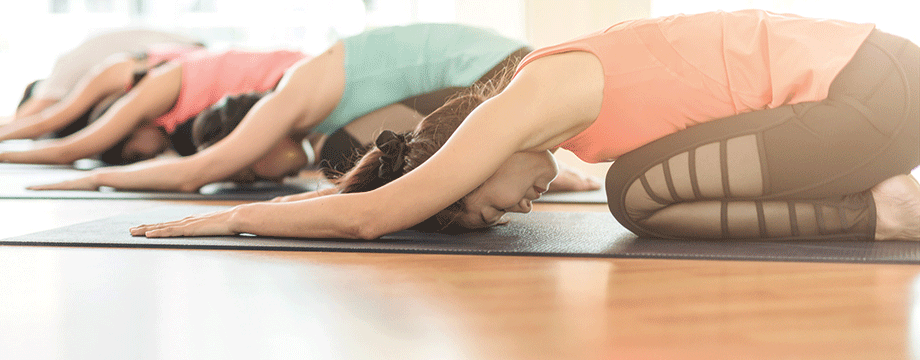Staying supple

Maintaining free movement as we age is core to our general health and wellbeing. We ask the experts about yoga, t’ai chi and pilates.
T’ai chi
Jan Golden of T’ai Chi Ireland taichi-ireland.com
T’ai chi involves examining your current postural configuration and gently optimising it with, firstly, static postures to effect a change in the fascial superstructure and then with very slow calibrated and precise movements to rewire the nervous system into a vastly more efficient organism with a full range of childhood motion. All postures should be able to manifest full-body power. The slow sequence of moves that people recognise as tai chi are then seen as repetitive layerings to transform the previous mosaic capacity of the tight and restricted body into a graceful powerhouse of optimal strength, resilience and energy.
To practise t’ai chai you should wear loose clothing with flat shoes or barefoot and you can do it anywhere.
For an average student who practises diligently, excellent results can be achieved after a year. T’ai chi has numerous benefits including strengthened joints, muscles, tendons and ligaments; enhanced balance, coordination, concentration, focus and relaxation; optimised breathing; greatly reduced mental strain and stress; strengthened organs and body systems and it boosts your immune system. You can also experience improved feelings of wellbeing and a reduction in depression, and a general improvement in suppleness.
There are no age limits to practising t’ai chi beyond the basic need to be able to stand and follow instructions. A good teacher should be able to tailor a class to your abilities or limitations.
Yoga
Gráinne O’Driscoll runs Grá For Fitness offering public, private and corporate Pilates, yoga and fitness classes
Yoga is an ancient practice originating in India and there are a multitude of yoga styles including Hatha, Ashtanga, Iyengar and Bikram to name just a few.
A standard yoga class starts with a warm up, and includes a variety of postures or ‘asana’ targeting different parts of the body followed by ‘savasana’ (relaxation) at the end. Meditation and ‘pranayama’ (breathing exercises) are important elements of yoga and feature in many classes.
For practise you need a mat and you are advised to wear comfortable easy to move in clothing. There are various pieces of equipment you can use including belts and blocks, your teacher will have these available. Bare feet work best for grip, but do bring some socks and a sweater until you’re warmed up at the beginning and for relaxation at the end.
These days yoga classes are available everywhere from studios to schools, as well as online. If you’re new to yoga find a recommended beginner’s course to get you started.
Yoga, like any form of exercise, can be hugely beneficial physically and mentally. Frequent practitioners will often see increased flexibility, strength, stability and suppleness. Together with breath work and meditation, yoga can have a very positive effect on mental health helping to alleviate tension and stress.
How much you advance and how much time it takes depends on how much time you can give – most serious yogis practice every day. There are no age limits – children’s yoga classes are becoming increasingly popular and I recently met a yoga teacher who was just about to celebrate her 90th birthday.
Always let your teacher know of any injuries or illnesses you have so they can give you modifications.
Pilates
Gráinne O’Driscoll runs Grá For Fitness offering public, private and corporate Pilates, yoga and fitness classes
Pilates is a relative newcomer compared to yoga. This mind-body system was created by Joseph Pilates in the early 1900s. There are two branches of Pilates – equipment-based Pilates which uses resistance and mat Pilates.
Although there are commonalities with yoga and some of the exercises resemble yoga poses, Pilates is more focused on core strength and stability with a strong emphasis on pelvic and spine alignment and posture. Many of the exercises feature dynamic movements of the limbs while you engage your core muscles to maintain total stability in the trunk.
To practise wear comfortable workout clothes and socks (rubber grip soles can be useful). Check with your teacher in advance if you need to bring your own mat. Pilates mats are a little bit thicker than yoga mats to support the spine.
Pilates is becoming increasingly popular and more widely available. Mat Pilates can be taught anywhere. Equipment-based Pilates is taught in Pilates studios. Once you have learned the fundamentals with your teacher there are also some excellent online resources for your home practice.
As with anything to advance you need to practice regularly. It is recommended you practice three times a week to see results. Practised properly and safely, Pilates can help strengthen the entire body, more specifically by strengthening the core (muscles of the trunk) to support the spine, it can help prevent back and postural problems. Physical health professionals often use Pilates as part of a patient’s rehab. Other benefits include improved concentration, flexibility, balance and body awareness.
There are no age limits and your teacher should be able to offer modifications based on your abilities and any injuries or limitations you may have.
More Rude Fit articles.
Articles from our latest issue...